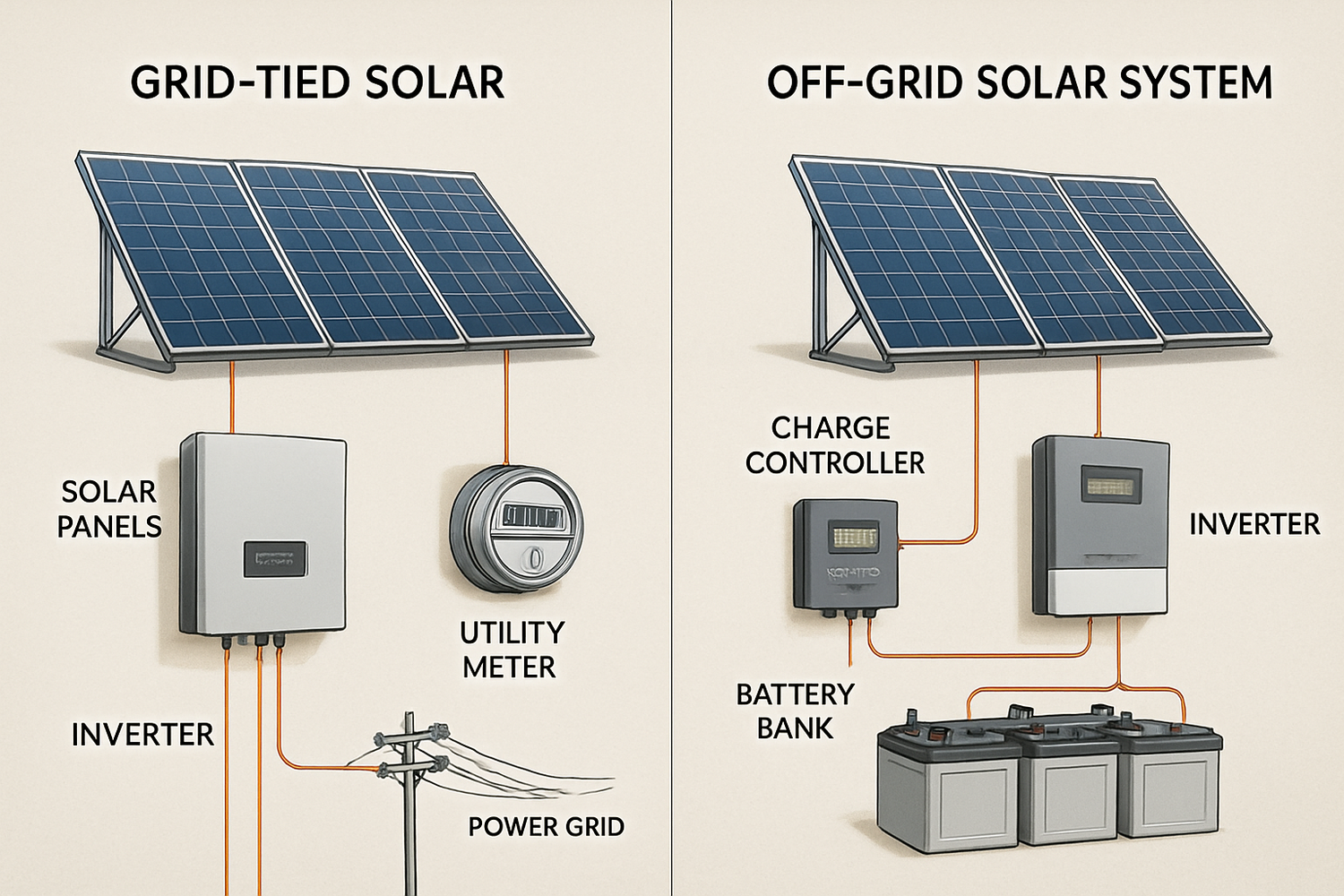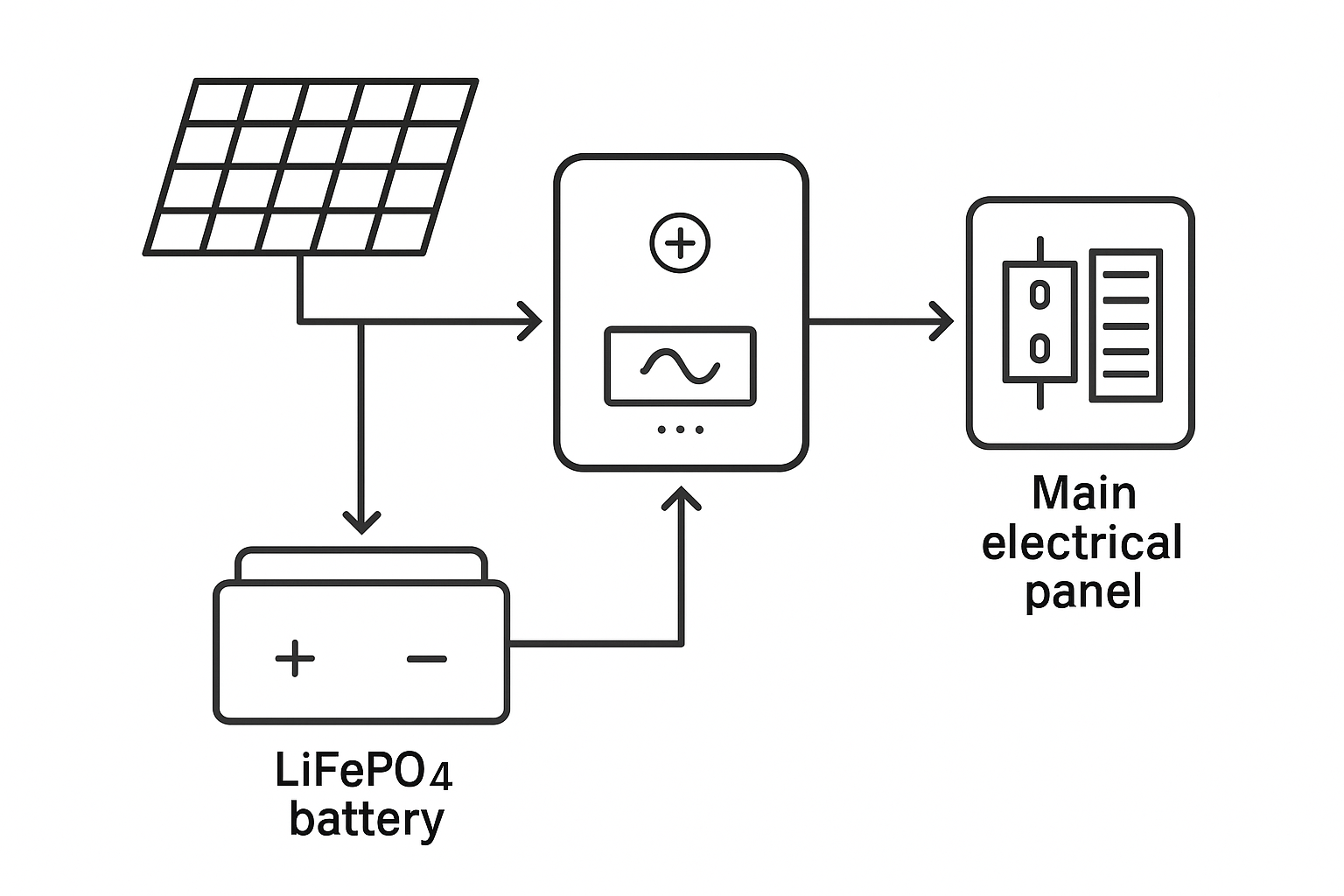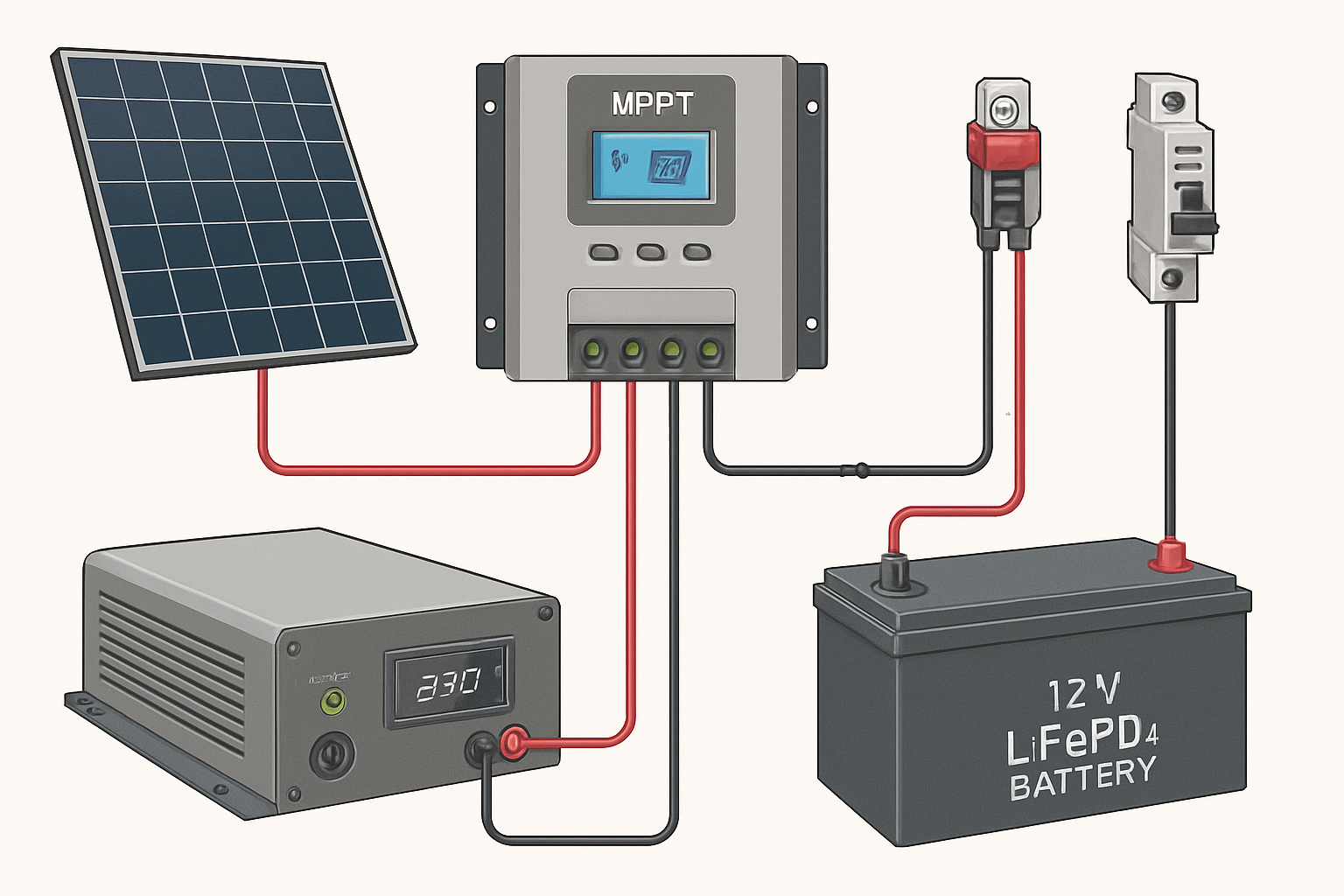Choosing a solar power system is a significant step toward managing your energy future. The two primary configurations are off-grid and grid-tied, each with a distinct design and purpose. Understanding the solar energy storage system diagram for each type is crucial for selecting the solution that aligns with your goals, whether it's achieving energy independence or reducing your utility bills. A well-planned schematic ensures your system operates safely and efficiently.
Understanding the Grid-Tied Solar System Diagram
A grid-tied system, also known as an on-grid system, is directly connected to the local utility grid. This setup allows you to draw power from the grid when your solar panels are not producing enough electricity, such as at night. Conversely, you can send excess power back to the grid, often for credit on your utility bill through a program called net metering.
Key Components in a Grid-Tied Diagram
The simplicity of a grid-tied solar diagram is one of its main attractions. The core components work together to integrate seamlessly with your existing electrical infrastructure.
- Solar Panels (PV Array): These capture sunlight and convert it into direct current (DC) electricity.
- Grid-Tied Inverter: This device converts the DC electricity from the panels into alternating current (AC) that is compatible with your home's appliances and the utility grid. Some systems use microinverters, which are installed on each panel.
- Utility Meter: A bi-directional meter tracks the flow of electricity to and from the grid. It records both the energy you consume and the excess energy you export.
- AC Disconnect: This is a safety switch that allows for the manual disconnection of the solar system from the grid, which is necessary for maintenance.
- Main Service Panel: Your solar system connects to your home's electrical system through a dedicated circuit breaker in the main service panel.
Energy Flow and Operation
In a grid-tied system, the energy flow is straightforward. Solar panels generate DC power, which the inverter converts to AC power. This AC power first supplies your home's immediate electrical needs. If the panels produce more power than you are using, the surplus is exported to the utility grid. When the panels are not producing power, your home draws electricity from the grid as usual. A key characteristic of standard grid-tied systems is that they automatically shut down during a power outage for safety reasons. This prevents them from sending power to a grid that utility workers may be repairing.
Deconstructing the Off-Grid Solar Diagram
An off-grid solar diagram illustrates a system designed for complete energy autonomy. It operates independently of the utility grid, making it an ideal solution for remote homes, cabins, or anyone seeking total energy independence. This self-sufficiency requires additional components to store energy and manage power.
Essential Components for Energy Autonomy
The off-grid solar diagram is more complex because it must provide reliable power without any backup from a utility. According to a report by the IEA, the components associated with energy delivery and storage are all part of the 'balance of system' (BOS). For more details, you can refer to the Solar Energy Perspectives report.
- Solar Panels (PV Array): As with grid-tied systems, these are the primary source of energy generation.
- Charge Controller: This device regulates the voltage and current from the solar panels to prevent the batteries from overcharging.
- Battery Bank: This is the heart of an off-grid system. It stores the energy generated by the solar panels for use when the sun isn't shining. A deep cycle lithium battery, such as a 12v 100ah LiFePO4 lithium battery, is a popular choice due to its long life and high efficiency.
- Off-Grid Inverter: This converts the DC electricity stored in the batteries into AC power for your appliances. It is different from a grid-tied inverter because it establishes its own stable AC waveform.
- System Monitoring: A monitoring system provides real-time data on battery charge, energy production, and consumption, helping you manage your power usage effectively.
Power Generation and Storage Loop
The energy flow in an off-grid system is a continuous loop. Solar panels generate DC power, which is managed by the charge controller. The charge controller directs the power to the battery bank for storage and simultaneously allows power to flow to the inverter if there is immediate demand. The inverter then draws from the batteries to supply AC power to your home. The success of this system hinges on proper sizing. As demonstrated in a project for Oglala Lakota College, a properly designed off-grid system can reliably power tools and serve community needs, showcasing its practical application. You can read more about this in the EERE Success Story—Oglala Lakota College gets Hands-On Training for Off-Grid Solar.
Side-by-Side Comparison: Key Differentiators
The choice between an off-grid and a grid-tied solar diagram depends on your specific circumstances. The following table highlights the main differences in their design and function.
| Feature | Grid-Tied System | Off-Grid System |
|---|---|---|
| Grid Connection | Required | None |
| Energy Storage | Optional (in hybrid systems) | Mandatory |
| Reliability | Dependent on grid stability | Independent, limited by generation and storage |
| Initial Cost | Generally lower | Higher due to battery bank and additional components |
| Complexity | Simpler design and installation | More complex, requires careful load calculation |
| Best Application | Urban and suburban areas with a reliable grid | Remote locations, cabins, farms, or for energy independence |
Designing Your System: Practical Considerations
A successful solar power system design requires careful planning. The approach to sizing and component selection differs significantly between grid-tied and off-grid setups.
Sizing Your Solar Power System
For a grid-tied system, sizing is often based on your historical electricity consumption, found on your utility bills, and your financial goals. The aim is typically to offset as much of your electricity usage as possible. For an off-grid system, the process is more detailed. You must conduct a thorough load analysis to calculate your daily energy needs, which then determines the required size of your solar array and, most importantly, your battery bank.
The Role of Advanced Battery Technology
In any system with energy storage, the battery's performance is paramount. Lithium iron phosphate (LiFePO4) batteries are a leading technology for home battery storage systems due to their safety, long cycle life, and high efficiency. A 12V LiFePO4 battery is a common building block for creating larger energy storage solutions. The performance of these batteries can be affected by factors like temperature and discharge rate. For a deeper look into how these factors affect battery performance, the Ultimate Reference for Solar Storage Performance provides valuable data on discharge rates and temperature impacts.
Regulatory and Safety Standards
Both system types must comply with local and national electrical codes to ensure safety and reliability. As the IEA notes, appropriate technical grid connection rules are critical for grid-tied systems to ensure they do not negatively impact the grid. You can find more on this topic in the System Integration of Renewables report. Off-grid systems, while independent, still require proper installation with safety features like overcurrent protection and disconnects to protect the equipment and users.
Making the Right Choice for Your Energy Goals
Ultimately, the right system diagram for you depends on your priorities. A grid-tied system offers a simpler, more cost-effective way to reduce your carbon footprint and electricity bills, leveraging the grid as a massive battery. An off-grid system provides true energy independence and resilience, freeing you from utility companies and power outages, but it comes with a higher initial investment and greater complexity. By carefully examining each solar diagram, you can make an informed decision that aligns with your energy aspirations.
Disclaimer: This information is for educational purposes only. You should consult with a qualified solar professional for system design and installation. This is not financial or legal advice.
Frequently Asked Questions
Can a grid-tied system work during a power outage?
Typically, no. Standard grid-tied inverters are designed to shut down during a power outage for safety. This prevents them from energizing power lines while utility workers are making repairs. To have backup power with a grid-tied system, you would need a hybrid system that includes a battery bank and a specialized hybrid inverter.
What is the main cost driver in an off-grid system?
The battery bank is usually the most significant expense in an off-grid solar energy storage system. High-quality lithium battery storage solutions, such as LiFePO4 batteries, have a higher upfront cost but offer a longer lifespan, greater safety, and better performance, making them a worthwhile investment for a reliable system.
Is it possible to convert a grid-tied system to an off-grid system?
Yes, but it involves significant modifications. You would need to add a substantial battery bank, a charge controller, and likely replace the grid-tied inverter with an off-grid or hybrid inverter that is designed to manage battery power and form its own stable grid.
How do I calculate my energy needs for an off-grid system?
You need to perform a detailed load analysis. This involves listing every appliance and device you plan to power, noting their wattage, and estimating how many hours you will use each one per day. This calculation gives you a total daily energy consumption figure in watt-hours (Wh), which is the foundation for sizing your solar panels and battery bank correctly.





Leave a comment
All comments are moderated before being published.
This site is protected by hCaptcha and the hCaptcha Privacy Policy and Terms of Service apply.